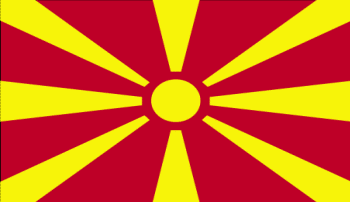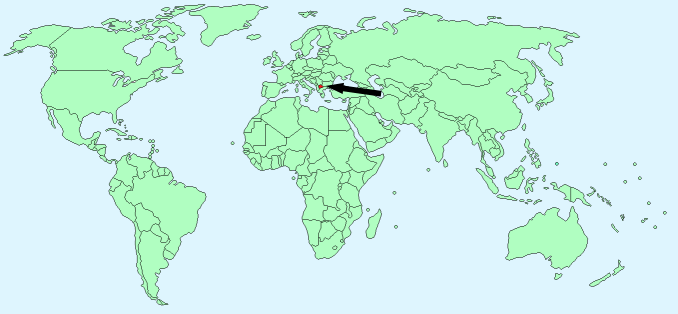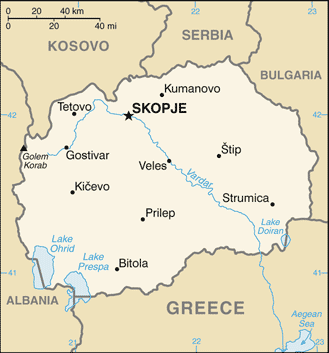Macedonia


Continent – Europe
Region – Eastern Europe
Size – 25,713 km²
Geography – mountainous with valleys
Language – Macedonian 66.5%, Albanian 25.1%, Turkish, Roma, Serb
Religion – Macedonian Orthodox 64.8%, Muslim 33.3%, other 1.9%
Monetary Unit – Macedonian denar
Natural Resources – low-grade iron ore, copper, lead, zinc, chromite, manganese, nickel, tungsten, gold, silver, asbestos, gypsum, timber, arable land
Agriculture – grapes, tobacco, vegetables, fruits; milk, eggs
Industry – food processing, beverages, textiles, chemicals, iron, steel, cement, energy, pharmaceuticals

Neighbouring Countries – Kosovo, Serbia, Bulgaria, Greece, Albania
Population – 2,091,719 (2014 estimate)
Population Growth Rate – 0.21%
Average Life Expectancy – 75.8
Capital City – Skopje (501,000)
Highest Mountain – Golem Korab (2764m)
Longest River – Vardar (388km)
Climate – Continental – cold winters – -4°C to 10°C and warm summers 14°C to 28°C
Yearly Rainfall – 55 cm (approx)
Plant Life – pine, beech, oak,
Animal Life – bears, wild boars, wolves, foxes, squirrels, chamois and deer
Bird Life – stork, owl, cuckoo, swan
Fish Life – letnica trout, lake whitefish, gudgeon, roach, podust, and pior
Harvard Reference for this page:
Heather Y Wheeler. (2015). Macedonia. Available: https://www.naturalhistoryonthenet.com/Facts_Figures/Country_Facts/macedonia.htm. Last accessed Tuesday, July 19, 2016
Facts and Figures Pages
